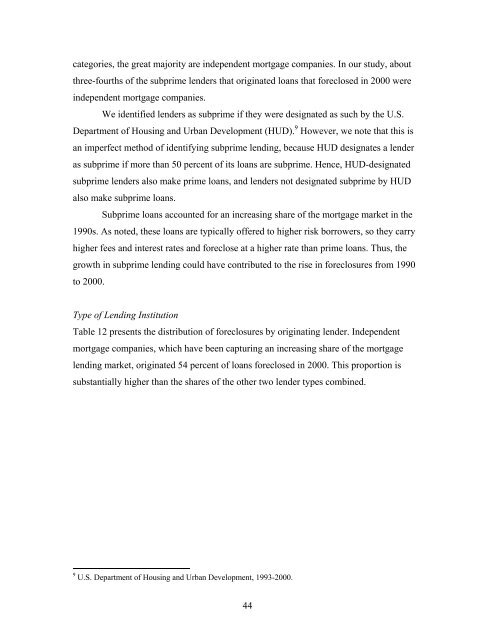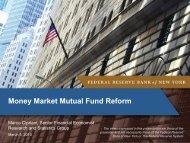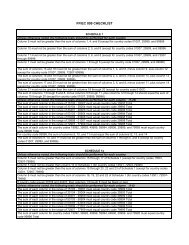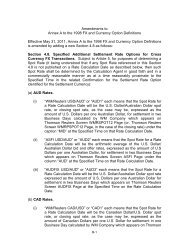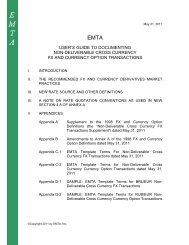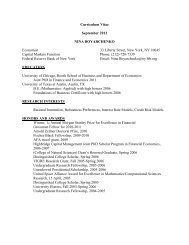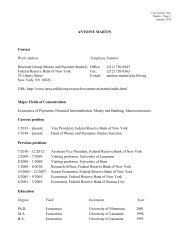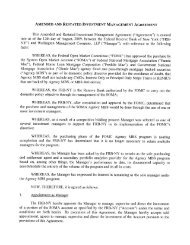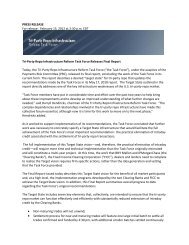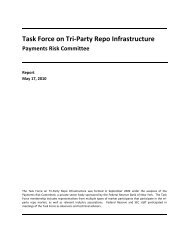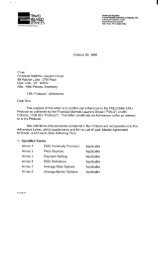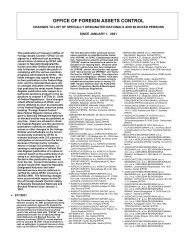Residential Foreclosures in the City of Buffalo, 1990-2000 - Federal ...
Residential Foreclosures in the City of Buffalo, 1990-2000 - Federal ...
Residential Foreclosures in the City of Buffalo, 1990-2000 - Federal ...
Create successful ePaper yourself
Turn your PDF publications into a flip-book with our unique Google optimized e-Paper software.
categories, <strong>the</strong> great majority are <strong>in</strong>dependent mortgage companies. In our study, about<br />
three-fourths <strong>of</strong> <strong>the</strong> subprime lenders that orig<strong>in</strong>ated loans that foreclosed <strong>in</strong> <strong>2000</strong> were<br />
<strong>in</strong>dependent mortgage companies.<br />
We identified lenders as subprime if <strong>the</strong>y were designated as such by <strong>the</strong> U.S.<br />
Department <strong>of</strong> Hous<strong>in</strong>g and Urban Development (HUD). 9 However, we note that this is<br />
an imperfect method <strong>of</strong> identify<strong>in</strong>g subprime lend<strong>in</strong>g, because HUD designates a lender<br />
as subprime if more than 50 percent <strong>of</strong> its loans are subprime. Hence, HUD-designated<br />
subprime lenders also make prime loans, and lenders not designated subprime by HUD<br />
also make subprime loans.<br />
Subprime loans accounted for an <strong>in</strong>creas<strong>in</strong>g share <strong>of</strong> <strong>the</strong> mortgage market <strong>in</strong> <strong>the</strong><br />
<strong>1990</strong>s. As noted, <strong>the</strong>se loans are typically <strong>of</strong>fered to higher risk borrowers, so <strong>the</strong>y carry<br />
higher fees and <strong>in</strong>terest rates and foreclose at a higher rate than prime loans. Thus, <strong>the</strong><br />
growth <strong>in</strong> subprime lend<strong>in</strong>g could have contributed to <strong>the</strong> rise <strong>in</strong> foreclosures from <strong>1990</strong><br />
to <strong>2000</strong>.<br />
Type <strong>of</strong> Lend<strong>in</strong>g Institution<br />
Table 12 presents <strong>the</strong> distribution <strong>of</strong> foreclosures by orig<strong>in</strong>at<strong>in</strong>g lender. Independent<br />
mortgage companies, which have been captur<strong>in</strong>g an <strong>in</strong>creas<strong>in</strong>g share <strong>of</strong> <strong>the</strong> mortgage<br />
lend<strong>in</strong>g market, orig<strong>in</strong>ated 54 percent <strong>of</strong> loans foreclosed <strong>in</strong> <strong>2000</strong>. This proportion is<br />
substantially higher than <strong>the</strong> shares <strong>of</strong> <strong>the</strong> o<strong>the</strong>r two lender types comb<strong>in</strong>ed.<br />
9 U.S. Department <strong>of</strong> Hous<strong>in</strong>g and Urban Development, 1993-<strong>2000</strong>.<br />
44


